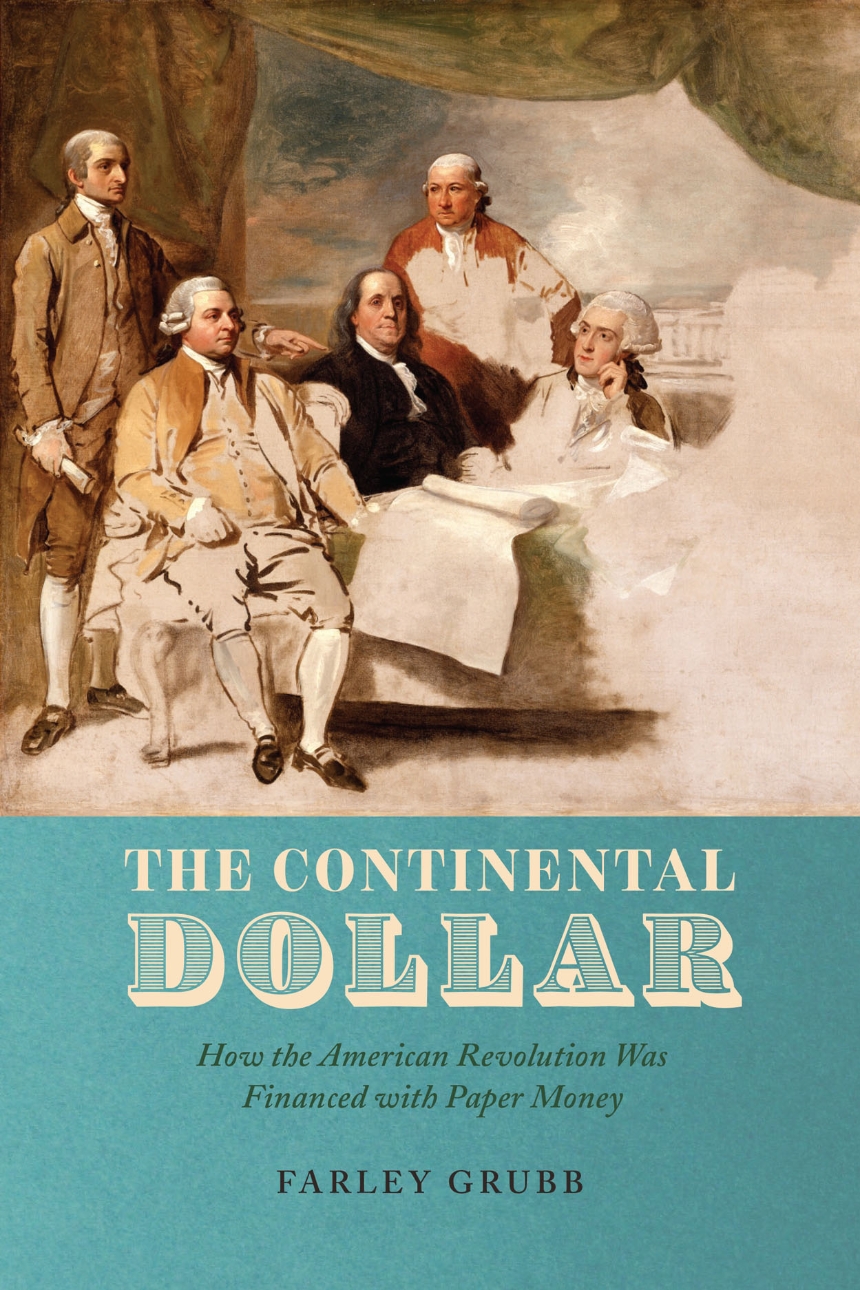The Continental Dollar
How the American Revolution Was Financed with Paper Money
9780226826035
9780226826042
The Continental Dollar
How the American Revolution Was Financed with Paper Money
An illuminating history of America’s original credit market.
The Continental Dollar is a revelatory history of how the fledgling United States paid for its first war. Farley Grubb upends the common telling of this story, in which the United States printed cross-colony money, called Continentals, to serve as an early fiat currency—a currency that is not tied to a commodity like gold, but rather to a legal authority. As Grubb details, the Continental was not a fiat currency, but a “zero-coupon bond”—a wholly different species of money. As bond payoffs were pushed into the future, the money’s value declined, killing the Continentals’ viability years before the Revolutionary War would officially end.
Drawing on decades of exhaustive mining of eighteenth-century records, The Continental Dollar is an essential origin story of the early American monetary system, promising to serve as the benchmark for critical work for decades to come.
The Continental Dollar is a revelatory history of how the fledgling United States paid for its first war. Farley Grubb upends the common telling of this story, in which the United States printed cross-colony money, called Continentals, to serve as an early fiat currency—a currency that is not tied to a commodity like gold, but rather to a legal authority. As Grubb details, the Continental was not a fiat currency, but a “zero-coupon bond”—a wholly different species of money. As bond payoffs were pushed into the future, the money’s value declined, killing the Continentals’ viability years before the Revolutionary War would officially end.
Drawing on decades of exhaustive mining of eighteenth-century records, The Continental Dollar is an essential origin story of the early American monetary system, promising to serve as the benchmark for critical work for decades to come.
296 pages | 9 halftones, 20 line drawings, 27 tables | 6 x 9 | © 2023
Markets and Governments in Economic History
Economics and Business: Economics--History, Economics--Money and Banking
History: American History
Reviews
Table of Contents
List of Tables
List of Figures
A Note on Citation Format
Preface
Introduction
Part I What Was the Continental Dollar? The Intended Structural Design
Chapter 1 Emitting Continental Dollars
Chapter 2 Richard Smith and New Jersey’s Influence
Chapter 3 Denominational Spacing and Value Size
Chapter 4 Informing the Public
Chapter 5 Descriptions by Contemporary Leaders
Chapter 6 Congressional Spending
Chapter 7 Legal Tender
Chapter 8 Loan Office Certificates
Part II Value and Performance
Chapter 9 Modeling Value
Chapter 10 Rational Bond Pricing
Chapter 11 The Current Market Exchange Value
Chapter 12 Time-Discounting versus Depreciation
Chapter 13 1779: The Turning Point
Chapter 14 1780–1781: The Road to Abandonment
Part III Epilogue
Chapter 15 State Redemption of Continental Dollars
Chapter 16 The 1790 Funding Act and Final Default on the Continental Dollar
Chapter 17 The Constitutional Transformation of the US Monetary System
Acknowledgments
Appendices Getting the Numbers Right
Appendix A Reconciling the Disparate Statements in the Secondary Literature Regarding Continental Dollar Emissions
Appendix B The Denominational Structure of American Paper Monies, 1755–1781
Appendix C The Cumulative Value of Continental Dollars Emitted, 1775–1780: Face Value versus Present Value
Appendix D The Redemption of Continental Dollars by Individual States over Time
Notes
References
Index
List of Figures
A Note on Citation Format
Preface
Introduction
Part I What Was the Continental Dollar? The Intended Structural Design
Chapter 1 Emitting Continental Dollars
Chapter 2 Richard Smith and New Jersey’s Influence
Chapter 3 Denominational Spacing and Value Size
Chapter 4 Informing the Public
Chapter 5 Descriptions by Contemporary Leaders
Chapter 6 Congressional Spending
Chapter 7 Legal Tender
Chapter 8 Loan Office Certificates
Part II Value and Performance
Chapter 9 Modeling Value
Chapter 10 Rational Bond Pricing
Chapter 11 The Current Market Exchange Value
Chapter 12 Time-Discounting versus Depreciation
Chapter 13 1779: The Turning Point
Chapter 14 1780–1781: The Road to Abandonment
Part III Epilogue
Chapter 15 State Redemption of Continental Dollars
Chapter 16 The 1790 Funding Act and Final Default on the Continental Dollar
Chapter 17 The Constitutional Transformation of the US Monetary System
Acknowledgments
Appendices Getting the Numbers Right
Appendix A Reconciling the Disparate Statements in the Secondary Literature Regarding Continental Dollar Emissions
Appendix B The Denominational Structure of American Paper Monies, 1755–1781
Appendix C The Cumulative Value of Continental Dollars Emitted, 1775–1780: Face Value versus Present Value
Appendix D The Redemption of Continental Dollars by Individual States over Time
Notes
References
Index
